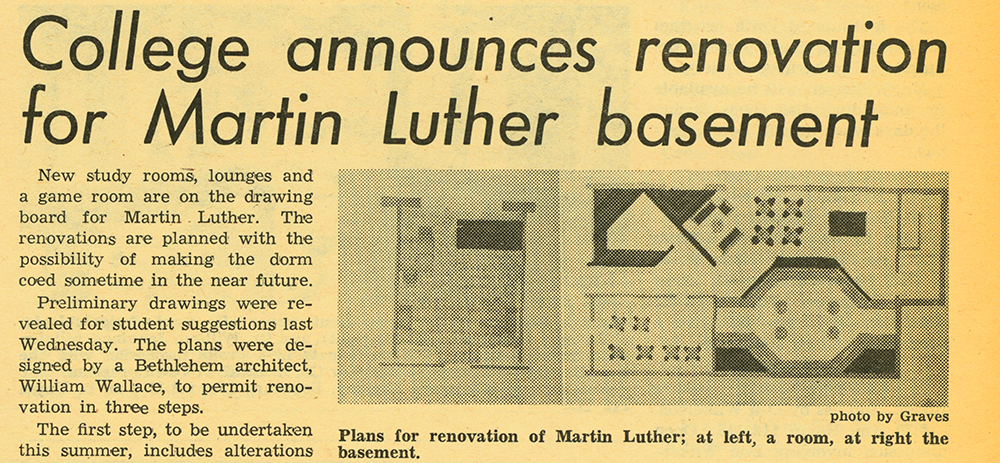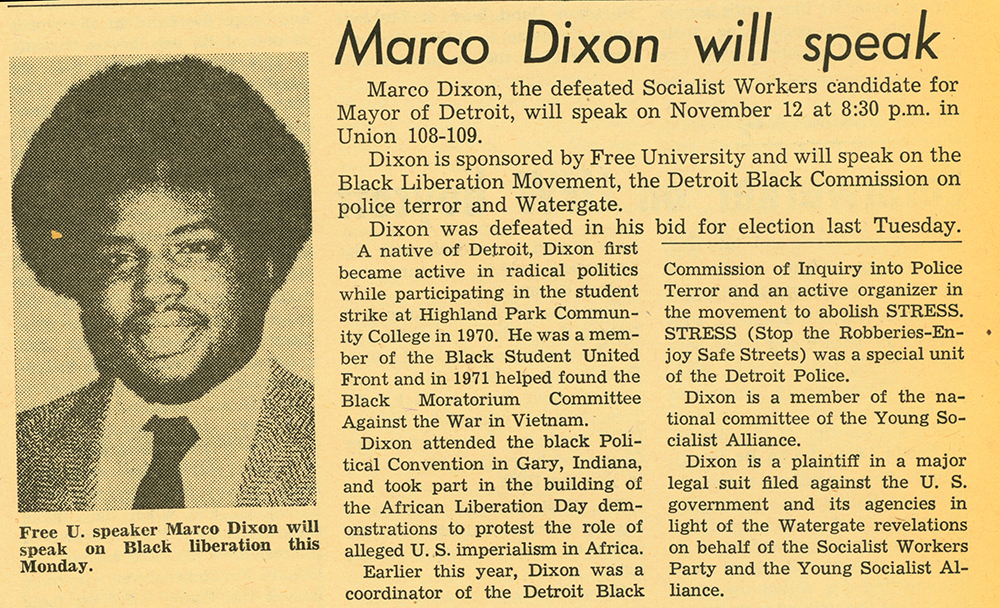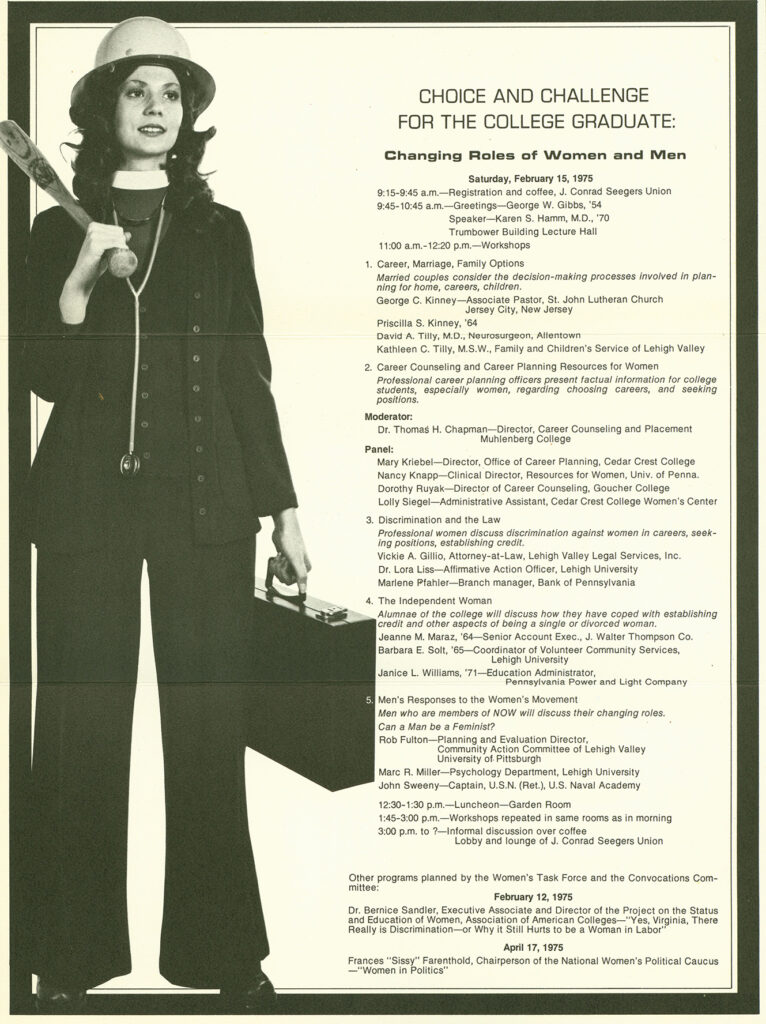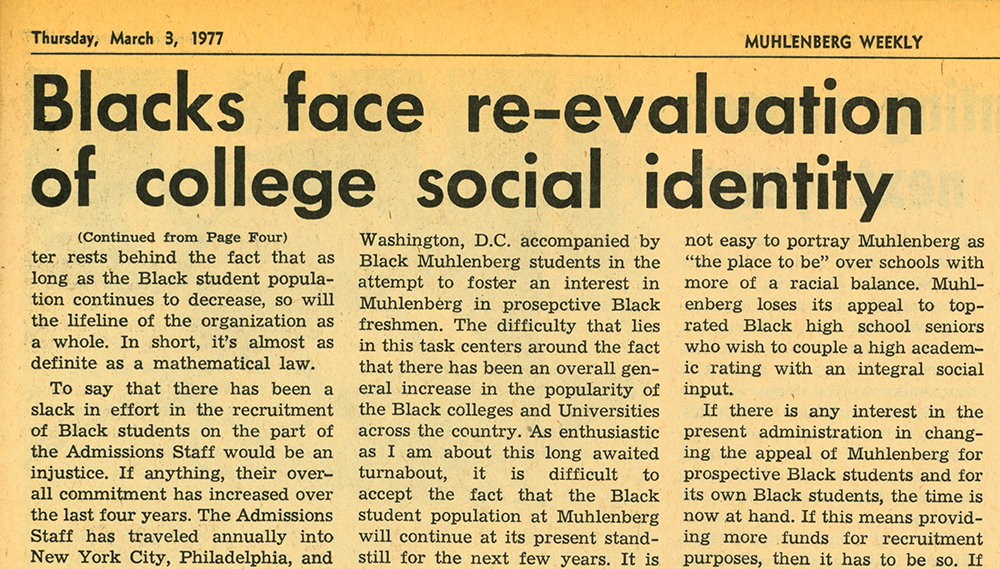
Following the EOP initiative to invite Black students to apply for scholarships for a college education at Muhlenberg, the campus seemed to shift its priorities after the class of 1973 graduated. Administrators, faculty, and students turned their attention away from diversity issues toward pressures from within and from without. The passing of federal government regulations, including Title VII and Title IX, and the increasing awareness of the changing roles of women and Black students and their legal rights, became pressing issues among the many campus concerns.
Students were vocal about their rights to criticize the administration and faculty. For example, when the basement of the Martin Luther dormitory was scheduled for Summer renovations, including repurposing the Black Culture Room, Black students protested and the Muhlenberg Weekly criticized the ousting of the Black Collegians, arguing the room “should remain” for Black students.11 Despite protests, the renovations moved forward, increasing space for all students while also removing the proprietary nature of the Black Culture Room.



